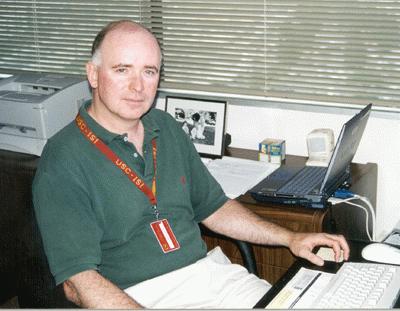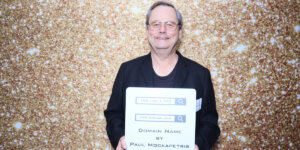
Bob Lucas
Bob Lucas has a vision of a new breed of computing devices — cheaper, smaller, and much easier to use. He believes that advances made in embedded circuits show the way — and he is heading up a new Computational Sciences Division, Division 1, at ISI to move along this road.
Lucas, who came to ISI from the NERSC High Performance Computing Laboratory at Lawrence Laboratory, Berkeley, says that existing cluster supercomputers are clearly less than optimal for many big problems in science and engineering.”We have machines that need multimillion dollar buildings to house them, that themselves cost a great deal, and that are difficult to use.” he said. “Moreoever, the situation has actually gotten worse instead of better over the years.”
Lucas believes that system-on-a-chip technology, pioneered in projects such as ISI’s DIVA, will ultimately let at least one million processors work quickly, seamlessly, and efficiently together to work on computation-intensive problems like protein folding.
The new division will pioneer such systems, researching their VLSI architecture, their novel programming models, and their application to problems in science, engineering, and defense.
“Today’s SMP clusters are also very difficult to program, reducing the productivity of the people who write software for them,” Lucas added. “We look forward to exploring new programming models and compiler techniques that will help researchers concentrate on the science, not the computer.”
An announcement by ISI Executive Director Herbert Schorr said the new division “will focus on developing large-scale applications and maximizing their throughput on today’s systems, as well as those of the future.
“The range of activity will span bioinformatics, applied mathematics, compilers, performance tools, cluster software, and novel VLSI systems that address shortcomings in the SMP clusters that predominate high-end computing today.”
Lucas says that ISI is an ideal place to do the work because of its existing strengths. He points particularly to John Granacki’s work on the DIVA project, which is producing chips integrating processing and memory.
Personnel from the Advanced Systems Division will join the new unit, including Tim Barrett, Vay Birdow, Jacqueline Chame, Pedro Diniz, Jeff Draper, Mary Hall, Jeff Sondeen, Bert White, and the graduate students associated with their projects.
Prior to his work at Lawrence Berkeley, Lucas worked at DARPA as Program Manager, Assistant Director, and Deputy Director of the Information Technology Office. Before that, he was on staff at the Center for Computer Sciences in Bowie, MD, a position he assumed after receiving his Ph.D. in Electrical Engineering from Stanford.
Published on September 21st, 2001
Last updated on August 10th, 2021












